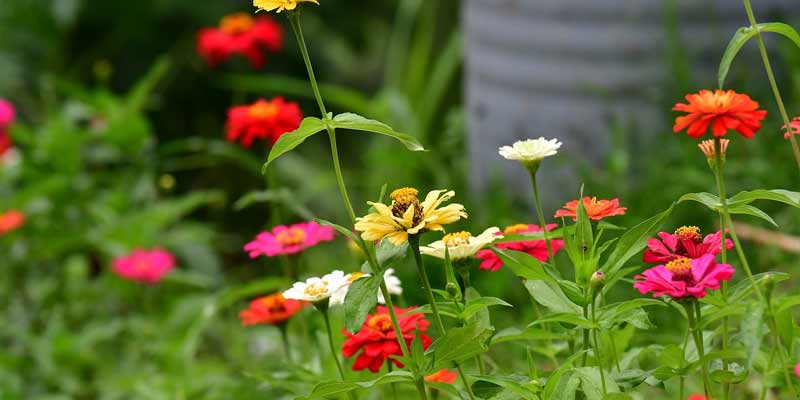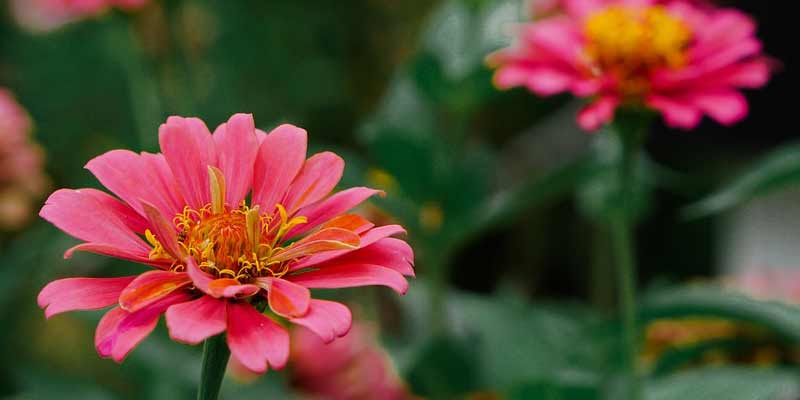Beloved additions to gardens, borders, and floral arrangements are zinnias with their vibrant colors and abundant blooms. These annual flowers thrive resiliently in a variety of climates and soil conditions; they bring joy as well as beauty to outdoor spaces. Nonetheless, for the healthiness; vigor–and prolific flowering–of zinnias, ensuring proper hydration is essential.
This comprehensive guide plunges into the intricate balance of water requirements for zinnias and unravels the mysteries surrounding these delightful flowers’ true hydration needs.
The Watering Essentials
In the life cycle of zinnias, water fundamentally plays a crucial role in their growth, development, and flowering; consistent moisture is required for them to thrive. However—excessive water can induce root rot and it can also invite fungal diseases and other moisture-related issues.
To maintain their health and vitality throughout the growing season – understanding precisely how much water zinnias need is imperative.
Soil Moisture Levels
Before you plant zinnias, ensure the soil is richly prepared with abundant organic matter and proper drainage; these flowers prefer well-draining yet moisture-retaining conditions, a delicate balance to strike.
Regularly monitor soil moisture levels by gently inserting your finger into the base of the plants as this will provide an accurate gauge for necessary hydration adjustments.
When you detect dryness in the top inch of soil, water zinnias; ensure to provide adequate moisture that can reach the root zone without over-saturating it.
Watering Frequency
Various factors—weather conditions, soil type, and plant size—affect the frequency of watering zinnias. During hot and dry periods more frequent irrigation may be necessary to sustain adequate moisture levels.
Alternatively in cooler or rainy weather, reducing watering frequency is crucial – this prevents waterlogged soil while also circumventing excessive root-encircling moisture.
Aim for deep, infrequent watering of zinnias; allow the s.oil to marginally dry between each watering. This strategy promotes robust root development.
Morning Watering
In the morning, ideally, one should water zinnias, this practice accelerates f.oliage drying and diminishes fungal disease risks. Further benefiting plant hydration is a by-product of morning watering; it fortifies them with adequate moisture to endure elevated temperatures and inevitable evaporation during daytime heat exposure.
Employ a gentle watering technique–directly targeting the base of the plants; this strategy circumvents over-saturating foliage, thereby mitigating potential leaf disease risks.
Drought Tolerance
Once established, zinnias demonstrate a moderate tolerance to drought. This characteristic renders them appropriate for gardens and landscapes that have limited water availability.
Yet—during extended periods of drought—supplemental watering may become necessary; without it, wilting and stress could plague these resilient plants.
Infrequent but deep-watering strategies promote deep root growth; furthermore – they bolster the plant’s resilience against arid conditions.
To conserve soil moisture and mitigate water loss through evaporation, you should consider mulching around your zinnia plants.
Container Gardening Considerations
Pay meticulous attention to the watering practices while cultivating zinnias in containers or pots; this is crucial for preventing soil dryness – a potential issue that could escalate into waterlogging. Notably, containers exhibit a propensity for quicker dehydration than garden beds, particularly amidst hot weather and windy conditions.
Therefore, regularly examine your soil’s moisture levels—adjust accordingly by adding more water when necessary—to maintain an optimal condition where it remains consistently moist yet not overly saturated (‘soggy’).
Make sure that the containers you use for your plants have sufficient drainage holes. These openings play a crucial role in allowing excess water to escape as this prevents root rot and the soil from becoming waterlogged.
Observing Plant Response
Essential for gauging the specific moisture requirements of zinnias is monitoring their response to watering practices. When provided with optimal moisture levels, healthy zinnia plants exhibit lush foliage; sturdy stems; and abundant blooms.
Conversely, overwatering or underwatering can manifest as wilted foliage—signs of stunted growth—and yellowing leaves. Base the adjustment of watering frequency and volume on plants’ observed needs, while considering environmental conditions and seasonal fluctuations.
Conclusion
A delicate dance, achieving the perfect balance of water for zinnias demands careful observation; attention to detail, and responsive gardening practices. Understanding the specific water needs of these plants is crucial, adapting watering routines accordingly can foster not just healthy but thriving blooms throughout their growing season.
Zinnias rewards gardeners with their enduring beauty and resilience in various environmental conditions – a testament to both diligent caretaking and nature’s robust design. Whether they are grown in garden beds or containers; or used as part of floral arrangements–zinnias often become an exquisite centerpiece that adds vibrancy to any setting.
Should you water and care for them mindfully, zinnias will reward your efforts with a spectacular display: their vibrant charm and vitality enrich outdoor spaces – brightening your days.



Leave a Reply